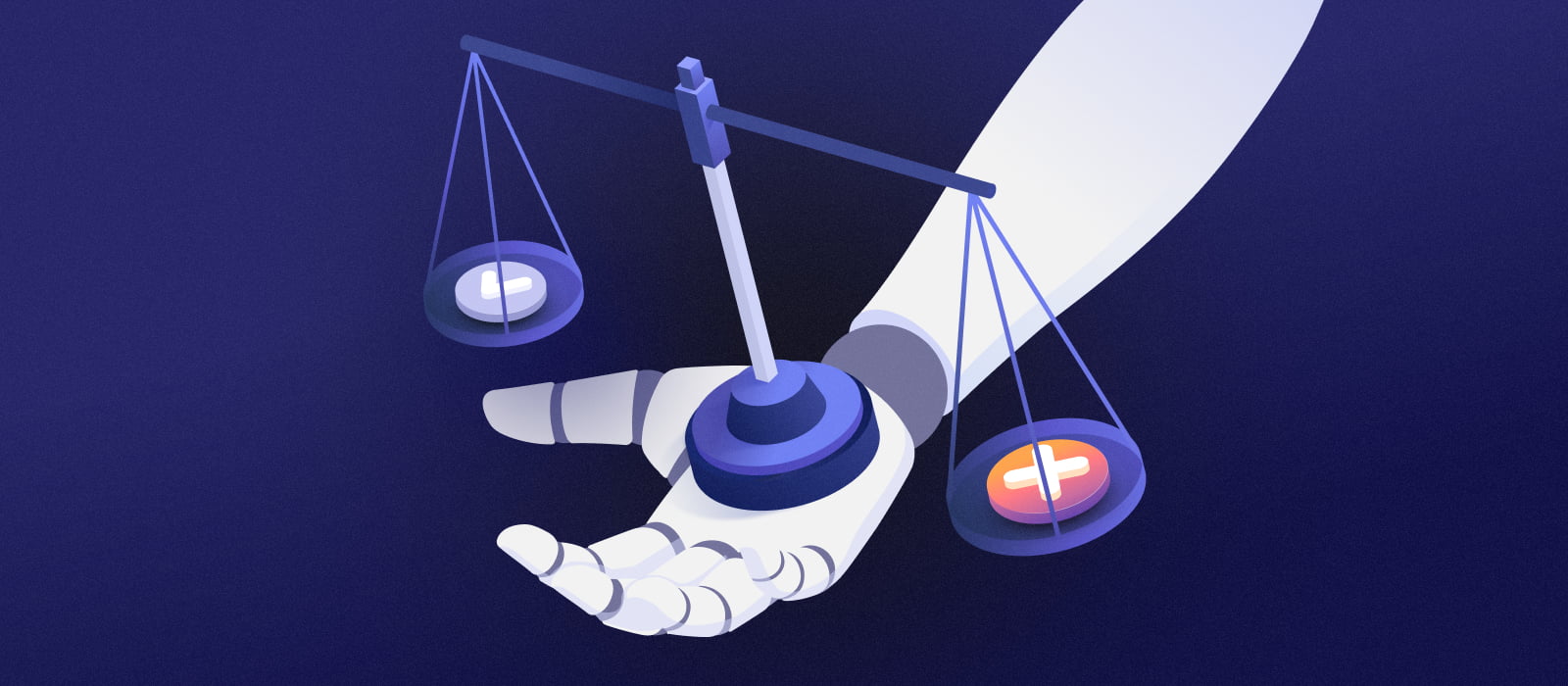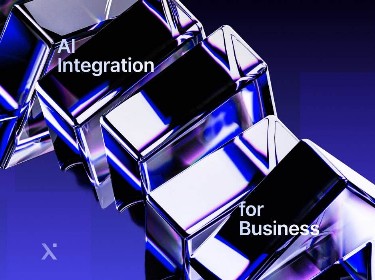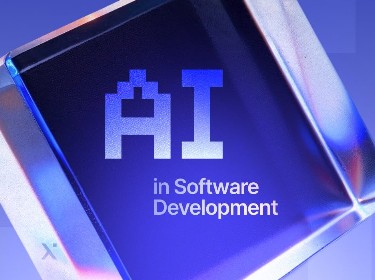Everywhere I go, I see its face — AI in our smartphones, news feeds, big city screens, and casual chats with friends. Bias is also all around us in real life, so can we really expect AI to be any different?
The global artificial intelligence market is projected to reach $407 billion by 2027, with a CAGR of 36.2% during the forecast period from 2022 to 2027. This exponential growth showcases the widespread adoption of AI across various sectors, as businesses worldwide harness the potential of artificial intelligence to drive innovation and growth.
Another survey of business owners proves their optimism about AI: a remarkable 97% of respondents identify at least one aspect where AI will benefit their business.
However, despite all the enthusiasm, there are also valid concerns: 30% of respondents worry about AI-generated misinformation. AI bias is one more major problem that can have a negative effect on society and turn the anticipated benefits of AI into harm for certain groups of people.
Read on to find out more about specific AI bias examples, its influence, why it occurs, and how to prevent such cases from happening in the future, allowing us to fully enjoy this innovation.
What is AI bias?
AI bias is like a well-intentioned friend who unconsciously favors some people over others. It happens for a simple reason: AI systems and machine learning models learn from historical data, and if that data carries any biases, AI can unwittingly perpetuate and amplify those prejudices in its decision-making.
Examples of AI bias come in different forms: in the context of hiring, an AI system might favor male candidates over female candidates if historical hiring data reflects a similar bias.
The consequences of AI bias can be profound, affecting individuals’ opportunities, reinforcing societal inequalities, and even eroding trust in AI systems.
Addressing AI bias is essential to ensure fairness and equity in AI applications. It’s not only about identifying and correcting biases in AI models but also setting ethical guidelines and best practices for AI development to ensure bias doesn’t sneak in from the very start. It’s a complex challenge that requires collaboration among data scientists, ethicists, policymakers, and the broader community to create AI systems that are fair, equitable, and friendly to all.
This ML-driven Web3 security solution protects the assets of every user, without bias or exceptions
AI bias examples and real-word cases
![]()
Four of the most widespread and concerning biases found in AI applications are racial bias, sexism, ageism, and ableism. Let’s delve deeper into these examples of AI bias and examine specific cases that have been detected in AI-powered applications.
Racism
Racism in AI is the phenomenon where AI systems, including algorithms and ML models, show unfair prejudice towards certain racial or ethnic groups.
The impact of these examples of bias in AI on society is substantial and multi-faceted. Think about facial recognition software that misidentifies people of a certain race, leading to false arrests or surveillance. Or job recommendation algorithms that favor one racial group over another, hindering equal employment opportunities.
These biased AI decisions, often not taken seriously because “it’s just a machine,” can reinforce systemic racism, making it crucial for developers to proactively address this issue.
Real-world cases
A study published in Nature conducted an online experiment with 954 individuals, including both clinicians and non-experts, to assess how biased AI affects decision-making during mental health emergencies.
Participants were presented with fictitious crisis hotline call summaries featuring male individuals in distress, with their races randomly assigned as either Caucasian or African-American, and religious identities as either Muslim or non-Muslim.
Initially, without AI input, decisions made by participants did not show bias toward the individuals based on their race or religion. However, when provided with prescriptive recommendations from AI, which was more likely to suggest police involvement for African-American or Muslim individuals, participants’ decisions displayed significant racial and religious disparities.
Another study indicates that AI-driven diagnostic tools for skin cancer may be less accurate for individuals with dark skin, mainly because the image databases used to train these systems lack diversity in ethnicity and skin type.
Out of 21 open-access skin cancer image datasets, few record ethnicity or skin type, with a severe scarcity of images representing darker skin tones. This discrepancy raises concerns about the potential exclusion of certain populations from AI-based clinical applications and the risk of misdiagnosis. Researchers and experts call for more inclusive data to ensure AI tools are reliable and effective for all skin types.
Moving on to something a bit less serious for our health but still noteworthy — racial bias in generative AI. Midjourney, a popular AI-powered text-to-image system, often displays pictures of old white men with glasses when asked to create images of smart or influential people, showing a lack of representation for other races.
Generative AI also perfectly combines with healthcare. Discover how this technology is being utilized in this critical sector
Sexism
Artificial intelligence systems often display unfair or prejudiced behavior towards individuals based on their gender. If a resume-sorting AI has been fed data that mostly associates men with programming or engineering roles and women with administrative or caregiving tasks, it might prioritize male resumes for a tech job opening, sidelining equally qualified female candidates.
It doesn’t stop there. Health apps that default to male symptoms for heart attacks or car safety features optimized for male body types are just a few examples of how gender bias in AI can have real, and sometimes dangerous, consequences.
Real-world cases
Melissa Heikkilä from MIT Technology Review shared her experience with Lensa, a trending AI avatar app. Despite her male colleagues receiving diverse, empowering images where they were portrayed as astronauts and inventors, Melissa, a woman of Asian descent, received numerous sexualized avatars, including topless versions, reminiscent of anime or game characters. She did not request such images and did not give her consent for them.
The underlying issue isn’t just the biased training data; developers also decide how this data is utilized, potentially mitigating or exacerbating biases. While Lensa’s developers, Prisma Labs, acknowledge the issue, claiming efforts to reduce biases, the problem of unintentionally promoting stereotypes remains pervasive in AI technology.
Another case that may be familiar to everyone, yet not often recognized as problematic, is AI-powered voice assistants. Typically, these assistants — like Siri, Alexa, and Cortana — are given female identities by default, both in voice and character. UNESCO points out that this common practice reinforces gender biases, implicitly accepts verbal abuse, and continues to promote outdated stereotypes of women as subservient.
UNESCO’s report advocates for a shift in this standard. It recommends the development of gender-neutral AI, the implementation of programming that counters abusive language, and the explicit communication that these assistants are not human.
Turn to our services to create your own customized chatbot that will enhance customer interaction and provide round-the-clock support
Ageism
Some other bias in AI examples include ageism. It is spread in two primary ways: it can either overlook the needs of older individuals or make incorrect assumptions for younger people. For example, an AI might wrongly predict an older age for a user based on outdated stereotypes encoded in its training data, leading to inappropriate content recommendations or services.
On the other hand, algorithms can also display biases against older people. For instance, voice recognition software may struggle with the vocal patterns of older users, or health algorithms might miss diagnoses more common in older populations. The issue extends beyond technology, reflecting societal attitudes that undervalue the elderly and overlooking their needs in design and functionality.
Real-world cases
When Midjourney’s AI creates images for general job categories, it tends to choose pictures of youthful faces, leaving older adults out of the picture. In contrast, for specialized job titles, the AI tends to include older professionals, but here’s the catch: it’s only older men. This pattern subtly implies that certain jobs are not associated with older individuals and that wisdom or expertise in a field is often linked to older men, not women (🤷♀️).
The AI also seems to favor a youthful look for women, with images showing them without any age-related features such as wrinkles, while men are depicted as aging naturally. This unfortunately mirrors real life, where fashion magazines still push women to maintain a youthful appearance at any age but allow men to age normally.
Ableism
Ableism is among AI bias examples as well. It occurs when AI summarization tools disproportionately emphasize able-bodied perspectives, or when an image generator reinforces stereotypes by depicting disabled individuals in a negative or unrealistic manner.
To other bias AI examples might be voice recognition software that struggles to understand speech impairments, excluding users with such conditions from using the technology. These issues highlight the inherent bias within AI systems. They underscore the urgent need for inclusive training datasets and the development of AI that is consciously designed to understand and accommodate the full spectrum of human diversity.
Real-world cases
Seven researchers at the University of Washington conducted a three-month study that assessed the usefulness and limitations of AI tools like ChatGPT and image generators for people with disabilities. They encountered mixed results:
- AI tools sometimes helped reduce cognitive load by switching tasks from generation to verification. For example, “Mia” used ChatPDF.com to summarize PDFs, which was occasionally accurate but also produced incorrect content.
- AI-generated messages for Slack were perceived as robotic, though they increased the writer’s confidence.
- For visualization help, AI was useful to a participant with aphantasia but failed to create appropriate images of people with disabilities.
- An AI summarizing tool redirected the focus from chronically ill people to their caregivers and an AI image generator created problematic representations of disabilities.
The study showed that AI and machine learning services could be helpful but also revealed significant problems, especially in producing and validating accessible content for people with disabilities. The researchers call for more work to improve AI’s application in accessibility.
When we look at AI bias in healthcare examples, the real-world consequences become alarmingly clear.
Take, for instance, a risk prediction algorithm that was designed to manage patient care. It ended up systematically under-predicting the health needs of black patients. Why? The tool incorrectly used historical healthcare spending as a proxy for health, completely missing the fact that these communities often face barriers to accessing care in the first place.
This problem of skewed data pops up again in dermatology. Many AI tools built to detect skin cancer are simply less accurate on darker skin tones because their training datasets were not diverse enough. Similarly, we’ve seen algorithms for reading chest X-rays show reduced accuracy for female patients, a direct result of being trained primarily on data from men.
The issue even touches our genetics. Pharmacogenetic algorithms that help determine dosages for drugs like Warfarin have been shown to perform poorly for African American patients. They often fail to account for critical, underrepresented genetic variations, which can lead to improper dosing. This core issue of unrepresentative data is also a major concern in generative AI bias examples, where a system might produce flawed medical advice or patient summaries for certain demographic groups.
Explore AIRA, PixelPlex's retina disease symptom analyzer, leveraging machine learning to revolutionize the diagnosis of retinal pathologies
Is it possible to avoid AI bias? Several strategies by PixelPlex
![]()
Here is a list of measures you can take as the first step towards more equitable AI systems:
Evaluate algorithms rigorously
- Ensure data diversity by including a wide range of demographics in training datasets.
- Monitor bias continuously to detect and address issues in real-time within datasets and AI model outputs.
Implement a comprehensive bias mitigation plan
- Employ advanced tools like AI Fairness 360, IBM Watson OpenScale, or Google’s What-If Tool to detect and analyze biases in AI models.
- Re-engineer data collection and processing methods to ensure fairness and accuracy.
- Introduce transparent practices within the organization to document and make AI decisions available for review.
Strengthen human-AI interactions
- Inform AI developers and users about potential biases to promote vigilance in model training and deployment.
- Define clear guidelines to determine when AI should be involved in decision-making and when human intervention is necessary.
Cultivate collaborative development practices
- Bring together professionals from various disciplines to enhance bias identification and remediation efforts.
- Assemble AI teams with diverse personal and professional backgrounds to infuse the development process with a range of perspectives.
Prioritize data integrity in AI
- Focus on ensuring the accuracy, context, and relevance of data to minimize bias in AI systems.
By integrating these key principles into AI and chatbot development, we aim to create technology that grows smarter and also respects everyone’s needs and values. As AI becomes a bigger part of everything from our hospitals to our courts, schools, and jobs, it’s crucial to keep a watchful eye and actively work against bias. This way, we can make sure AI of the future isn’t just smart — it’s also fair and reflects what we all value as a society.
Whether you need predictive analytics, NLP, or any other machine learning consulting services, our expert team at PixelPlex has you covered
Final thoughts
For businesses stepping into the world of AI, it’s crucial not to stumble into the unintentional bias trap. It’s not just about crafting powerful AI solutions; it’s about creating AI systems that are genuinely fair, unbiased, and welcoming to all. Prioritizing ethical AI development is key to ensuring that your technologies benefit every user, without exception.
That’s where PixelPlex’s artificial intelligence development services come into play. With years of experience in the field of AI and a commitment to building bias-free solutions, we help businesses to unlock the transformative capabilities of this tech while also ensuring that their AI solutions are devoid of bias. This propels us toward a more equitable and prosperous society and shapes a brighter and more inclusive future for all.




